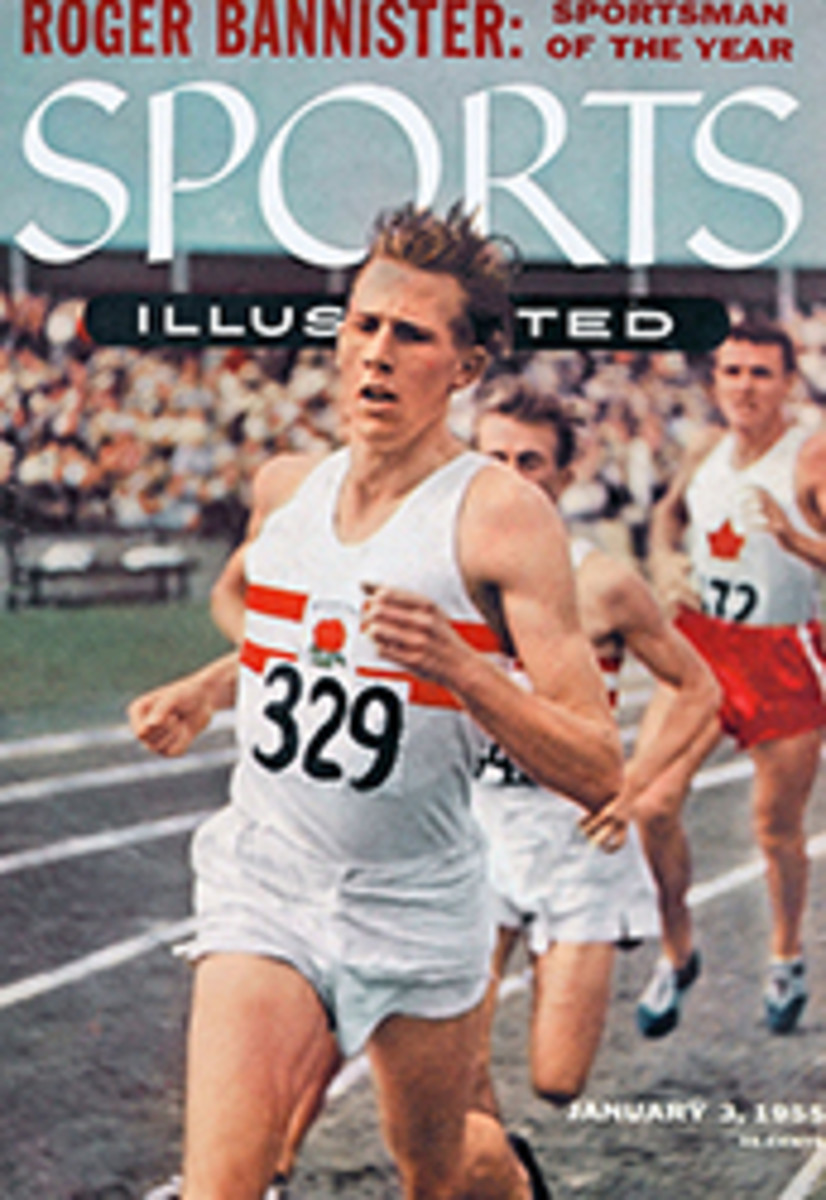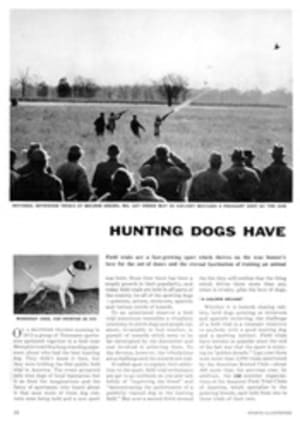
100 MPH AND UP
A sports car," says David Brown, head of the British automotive and tractor group which builds the famous Aston-Martin, "must be capable of accelerating from a standstill to 100 mph and braking again to a full stop inside 60 seconds." The definition demands too much of many medium-powered, modestly priced machines that qualify on all other counts, but it serves to illustrate the qualities a sports car lover looks for. Most will compromise on a machine versatile enough to handle as easily in traffic as it does on a race track, and the cars shown on the following pages, Europe's latest models, exemplify these standards.
When and where the first true sports car broke away from the rugged, bellowing tradition of the mammoth "racer" to acquire more tractable habits is a favorite subject of argument among lovers of the sporting speedsters. It seems likely, though, that the four-cylinder, "Alfonso" Hispano-Suiza of 1910—a beautifully built and very roadable little car with a T-head engine—sired the new breed.
Today it is unnecessary to spend a fortune acquiring a detuned version of last year's Grand Prix winner in order to own a sports car. Many of the more successful examples of the breed claim no racing origin but stem from production touring models whose components have been modified in the light of practical road tests.
Sports cars fall into three general groups: sports racing, sports touring and turismo type cars. In the first group are those purebred, direct descendants for which Italy is famous—Maserati, Ferrari, Alfa Romeo and Lancia. Britain, because of a certain genius for improvisation, predominates in the second group with such makes as the Austin-Healey and Triumph TR2; the Jaguar XK 120 (in its original form) and the ubiquitous little MG. The turismo category is something else again. Often used as a generic term, the name has come to imply exclusively cars with comfortable and practical enclosed bodywork, yet suitable for high-speed rallies and certain "production series" races. Prime examples of such cars are the Lancia Aurelia Gran Turismo (SI, Nov. 1) and the Alfa Romeo 1900 TI which did so well in the Mexican Carrera Panamericana.
Taken as a group, this year's crop of sports cars differs little from its 1954 counterpart. Of the 16 makes shown here, only one is brand-new—the British Doretti. Despite its picturesque Italian name, the Doretti was designed by an Englishman named Rainbow. It is, in fact, a luxury version of the Triumph TR2, using the same engine and running gear in a tubular chassis of longer wheelbase. The Doretti, with bodywork by the old, established Swallow firm, symbolizes a clean break with the unimaginative school of thought that grudgingly gave up the stubborn classicism of the box on wheels only to turn British sports cars into timid copies of the bold Italian sweep.
The French Salmson is a pedigreed machine whose forebears included early aircraft engines and various sports and racing cars famous in the '20s. Precision of manufacture and high performance are therefore inherent in the Salmson. Like the snub-nosed experimental body of the little DB Panhard, its lines may be lacking in romantic appeal, but its engine qualities are undeniable. As for the Panhard, packed under that blunt hood is a two-cylinder engine of tremendous endurance with a greater wallop than that of many four-cylinder units of larger displacement.
Each of the other makes holds a specific appeal for the potential buyer. For instance the Mille Miglia Ferrari is the fastest and most powerful custom-built sports car on the market. The 300SL Mercedes is the fastest production series machine available and the only one to adopt fuel injection. The Alfa Romeo is equipped with turbo-cooled (finned) aluminum brakes of direct racing origin. The Jensen 541 reflects a new trend in the use of plastic for closed bodies. The Jaguar XK-140 is now offered with an optional 210 horsepower cylinder head originally used on the racing "C-Type," the victor of Le Mans; the Frazer-Nash Sebring, besides its beautiful styling, is the lightest and most powerful model yet produced by this elite small firm. The fabulous Pegaso features the greatest—and as yet most unproven—concentration of advanced engineering ideas ever grouped together in one car. The Porsche Type 550 Spyder not only is the fastest 90 cubic inch sports-racing car in the world but the only one with a quadruple overhead camshaft, rear-mounted engine.
There may be doubts as to the elusive definition of a sports car, but its impact on the spare-time activities of a quarter of a million Americans is unquestioned. The advent of such "sporting" cars as the Thunderbird, Corvette and Darrin indicates that in America the polished art of driving for fun has come back to stay.
FOUR NEW MODELS FROM ITALY
Lancia Aurelia PF 200 coupe featuring jet styling and tail fins is a modern conception by the famous Italian coachbuilder, Pinin Farina. Powered by a unique V-6 engine of 118 hp, this car has the transmission and the rear axle combined in a single unit for optimum weight distribution and road-holding quality.
Ferrari Mille Miglia coupe by Pinin Farina, known as Type 375, is named after famous Italian Thousand Mile race. Its 12-cylinder engine develops 330 hp for a speed of 160 mph. Its 94-in. wheelbase, superb roadability and 2,150-pound weight ensure terrific performance. Price in the United States: $16,000.
Alfa Romeo TI (Turismo Internationale) is competition version of famous 1900 four-cylinder model with two overhead camshafts. Output of 120-cu.-in. engine is 115 hp; speed: 120 mph. With this Pinin Farina custom body, the car retails for $3,800 f.o.b. Italy. Delivery time: approximately four months.
Fiat 1100 carries the model designation TV (Turismo Veloce) on its handsome grille. Of highly customized appearance, this is a stock coupe by Pinin Farina, selling at the rate of three a day. Rugged four-cylinder overhead valve engine is modified to produce 49 hp. Speed: 90 mph; price in Italy: $2,800.
SIX OF BRITAIN'S NEWEST
Jensen 541 is a handsome, limited-production, 110-mph custom job with a plastic body by Abbott, of typically British lines. Austin-built, six-cylinder, 230-cu.-in. engine has 130 hp output. Adjustable shutters covering radiator are an unusual feature of this car. Price f.o.b. factory: $3,600.
Frazer Nash Sebring roadster, named after U.S. International sports-car race, is latest model in unique range of British competition cars. Bristol-built six-cylinder, overhead-valve engine develops 140 hp; de Dion rear axle follows racing practice. Top speed: 140 mph; price in Britain: $6,300.
Kieft 1100 is a late comer in the British sports-car field, built by small Wolverhampton firm famous for 500-cc race cars. Its Coventry Climax four-cylinder engine develops 75 hp, and was designed by ex-Jaguar and BRM engineers. Tubular chassis and plastic body ensure low weight and help account for 115 mph. U.S. price: $4,200.
Jaguar XK 140 All-Star model is a 1955 version of the famous XK 120 highly popular in U.S. The output of its six-cylinder, double-cam engine is boosted from 160 to 190 hp; other improvements include several styling changes, redesigned steering, and better cooling. Speed: 130 mph; prices in the United States start at $3,450.
Allard hand-built streamlined coupe is latest model of make famous in U.S. sports-car racing. A custom body on Palm Beach chassis is offered either with "Consul" four-cylinder, 92-cu.-in., 47-hp engine, or "Zephyr" six-cylinder, 138-cu.-in. 71-hp unit, both of Ford manufacture. F.o.b. factory with larger engine: $3,500.
Doretti, despite its Italian name, is first product of new British manufacturer named Swallow-Doretti. One of the new 100-mph sports cars specially conceived for the American market, Doretti has a four-cylinder, overhead-valve Triumph TR2 engine of 121 cu. in., with 90-hp output. Price: $2,905. Wire wheels are optional.
NEW GERMAN CARS
Mercedes 300SL sports coupe has a six-cylinder, 183-cu.-in. engine of 240 hp, inclined on its side. Fuel injection replaces the carburetors; tubular chassis features independent suspension on all four wheels. The unusual body has upswinging, gull-wing doors. Speed: 160 mph; U.S. sales price: $7,295.
Porsche "Spyder" Type 550 competition roadster is a sports-racing model of aerodynamic design. Rear-mounted, air-cooled flat four engine with overhead camshafts displaces only 90 cu. in. yet develops 110 hp. Overall third in Mexican race, Type 550 can do 140 mph. Sells in U.S. for $7,400.
THREE NEW FRENCH BEAUTIES
Salmson smooth-lined coupe on E-72 chassis is a postwar comeback effort of the veteran sports-car and aero-engine firm near Paris. Four-cylinder, 108-hp overhead camshaft engine displaces 140 cu. in.; transmission features clutchless shift. Speed is 110 mph. Price f.o.b. at French factory is $4,200.
Panhard DB coupe with bulbous front, flush-mounted headlights carries experimental plastic body by Chausson— France's big press shop. Famed for Le Mans victories on Performance Index, the DB has front drive and a flat air-cooled twin engine of only 52 cu. in., 42 hp. Car is priced at $3,500.
Talbot Lago Grand Sport is the newest streamlined version of famous model. Six-cylinder, 273-cu.-in. overhead-valve engine develops 215 hp; a self-shifting Cotal electric transmission is featured. Speed 124 mph. Few of these luxury cars have been built since firm started on armaments project. Price in France: $5,980.
NEW PEGASO IN SPAIN
Pegaso Model Z-102 with custom Berlinetta body by Saoutchik features ultramodern 171-cu.-in. overhead camshaft V-8 engine producing 250 hp. de Dion rear axle, five-speed transmission. Designed by Wilfredo Ricart, former Alfa Romeo engineer, it has a 160-mph speed, costs $20,000. Supercharger optional.
SIXTEEN PHOTOS
PIERRE BOULAT
ILLUSTRATION

